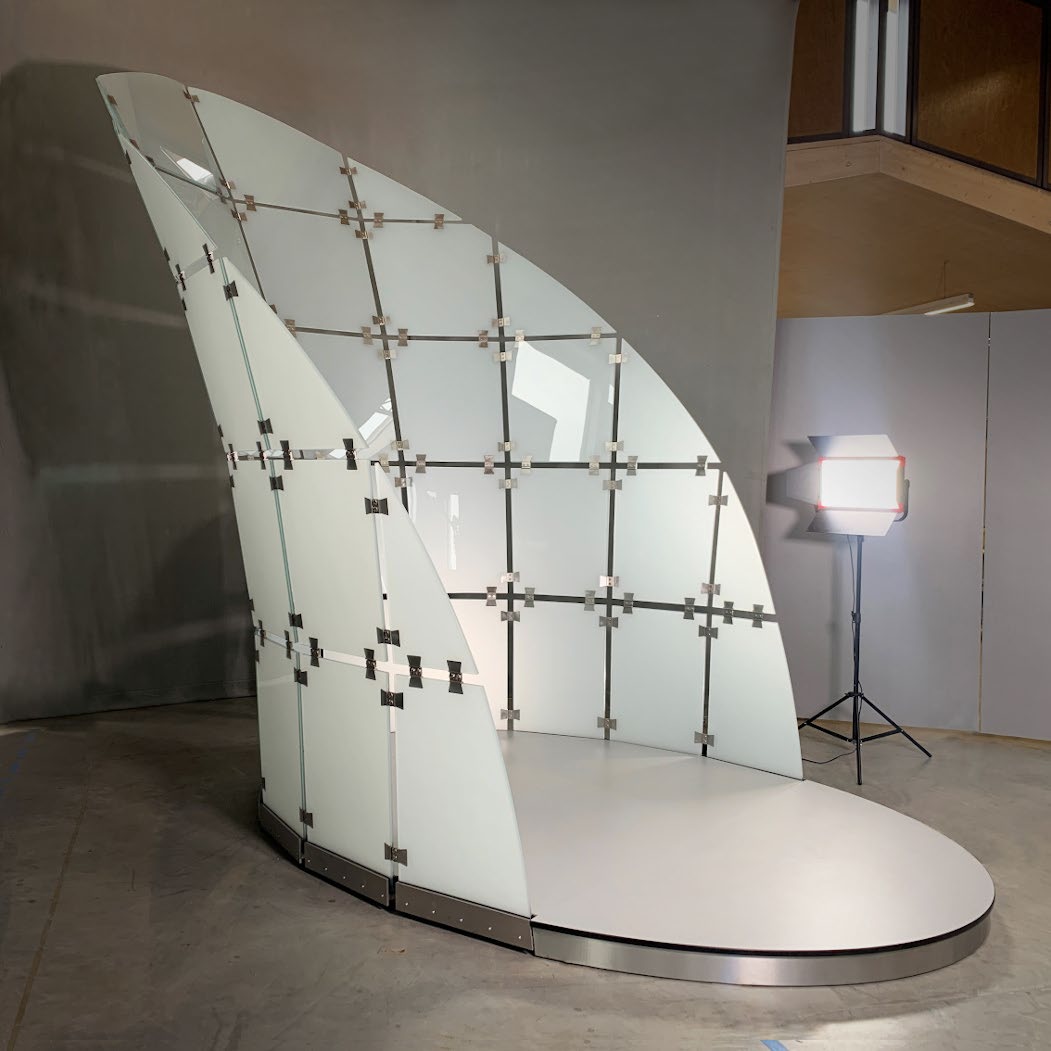Design Base for a Frameless Glass Structure Using Structural PVB Interlayers and Stainless-Steel Fittings
DOI:
https://doi.org/10.47982/cgc.8.369Downloads

Abstract
Minimizing metallic primary structures in directly glazed grid shells is key to increasing transparency. Complete renunciation to a substructure results in the glass itself bearing the loads, with thin glass shells, for example, that support loads mainly via membrane forces. A 4.20 m tall, double-curved, frame-less modular glass shell with stainless steel fittings laminated into the thin interstice of two-ply laminated safety glass has been developed and built as a demonstrator to validate the concept. The fittings used to structurally join the glass modules transfer all translation loads and provide a certain rotational stiffness. They are geometrically designed to reduce stress peaks inside the laminate and feature a laminated contact surface at the edge of the glass. For lamination, an interlayer stack was applied comprising exterior layers of structural PVB to bond the fitting with the glass and translucent PVB as interior core layer for aesthetic reasons. The design of this structure initially relied on generic values for designing and finite element modelling of the fitting-interlayer bond, particularly in tensile “pull-out” mode. The present paper undertakes a review of basic interlayer stack data with regards to viscoelastic properties and adhesion, and the engineering hypotheses using recent preliminary fitting test results for various loading schemes (bending, shear, tensile).
Published
Issue
Section
Laminated Glass & Interlayer Properties
License
Copyright (c) 2022 Wim Stevels, Thiemo Fildhuth, Thomas Wüest, Matthias Haller, Roman Schieber

This work is licensed under a Creative Commons Attribution 4.0 International License.



